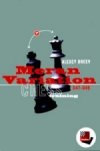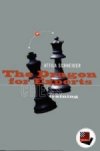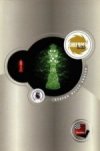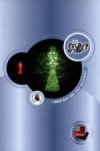 |
ChessBase Reviews |
Last updated 2 September 2001

| index |
CDs, DVDs, Software Part 5
These CDs are suitable for any Pentium PC running Windows 95,98,2000 or ME, and come with their own reader so you don't even have to have a copy of ChessBase.

The Meran Variation comes about from the lines arising after 1.d4 d5 2.c4 c6 3.Nc3 Nf6 4.Nf3 e6 5.e3 Nbd7 6.Bd3
dxc4 7.Bxc4 b5. It has been part of the repertoire of players such as Kasparov, Kramnik, Anand and Shirov.
The "Meran Variation" by Alexey Dreev is an exceptionally well made chess CD. The author's introductory texts are highly instructive with all the important sub lines given full coverage. 116 of the games on the CD are annotated by Dreev, including a number of his own games, and a further 41 are annotated by Christopher Lutz. The annotations are top class and would be of great assistance to any Correspondence player either playing this variation or playing against it.
The instruction database contains 935 games covering the period 1924 to 2000 whilst the main database contains 5471 games. Over 800 of the games in the main database are Correspondence games. The CD also has a CTG tree and a training database of 18 games which I found very interesting. Somehow the sight of the clock ticking down as you search for the solution seems to sharpen the instincts. As usual, the easy access to games from the training text makes the use of the CD a pleasure.

The "Reti Opening" by Don Maddox has a training database of 79 annotated games where once again you are pitted
against the clock to find the best move. The main database has a massive 31,918 games, over 1000 of which are
annotated, and 6 Openings Reports generated by ChessBase. Transpositional games such as the King's Indian Attack
can also be found in the main database. The openings CTG key is built from more than 14,00 games.
The author has set the CD out as he would a book, and the training texts cover a Foreword, an Introduction to the Reti, Basic Principles of the Reti, Advanced Reti Principles, The Art of Transposition, a short biography of Richard Reti and an introduction to the training database.
Don Maddox has many years of experience as a chess trainer and this leaves its mark on the CD. Those players who like variety in their openings will enjoy this CD, as the Reti can develop in a number of different ways. After 1.Nf3 d5 anything is possible.

The "Dragon for Experts" by Attila Schneider covers all variations of the Dragon System of the Sicilian Defence
after the starting moves 1.e4 c5 2.Nf3 d6 3.d4 cxd4 4.Nxd4 Nf6 5.Nc3 g6. The author is a renowned expert on this
opening and has already published many books on it.
The main database consists of 9316 games, over 600 of which are annotated. The instructional database consists of 70 texts, 34 of which are the author's surveys with clear evaluations of each line in words and variations. The texts individually list lines or link directly to annotated games. Some of these games are, for example, headed chapter 3 or chapter 5 as would be the case if the material were being presented in a book. Indeed, working through the texts you almost get the feeling that you are reading a book. Of course the CD contains much more material than it would be possible to print in a single volume, but I would say that to get the best out of this CD, it helps to have at least a basic grounding in the Dragon System. Once again, the CD contains an openings CTG tree.
ChessBase have just released three now playing programs, Shredder 5.32, Junior 7 and Deep Junior 7. All use ChessBase's GUI (Graphic User Interface) and their analysis modes could be useful to any Correspondence player wanting to analyse games they are looking at in researching their own play.

Shredder 5.32
Shredder is the reigning world champion in all sections (micro, open). The program proved its superb playing strength by winning the world championship titles in 1996 (Jakarta), 1999 (Paderborn) and 2000 (London). It has also won a number of other international computer tournaments. Shredder´s playing strength is the result of extensive chess knowledge. This leads to a positionally intelligent playing style. In addition, its endgame abilities are legendary. In this phase of the game it is superior to all other chess programs. The program comes complete with a gigantic new openings book and a 320,000 games database.

Junior 7
Both versions of this program were written by Amir Ban and Shay Bushinsky, and it has remained at the top of all international computer rating lists for many years now. At the Brain Games qualifier (April 2001), Deep Junior had the popular chess program Fritz on the ropes by going into a 5:0 lead in the 24-game match. Fritz had to work very hard to equalize in the very last game, and then win the playoff. Experts all over the world were deeply impressed by the ruthless attacking style that Junior displayed in this match. IM Hannu Wegner wrote: "The latest version of Junior has clearly made tremendous progress in tactics and especially in the execution of brilliant kingside attacks."

Deep Junior 7
Deep Junior is a multi-processor capable chess program that will run on computers with one, two or more processors. The program divides the task efficiently, and its speed increases with the number of processors. Junior profits from the experience and knowledge of leading grandmasters, like Boris Alterman, who was Garry Kasparov´s second in the famed internet game against the rest of the world. During this game, he was assisted by Deep Junior running on a four-processor system. GM Alterman has also contributed a giant openings book, optimized for Junior's playing style. This is included on the CD.
Junior won the Microcomputer World Championship in 1997, as well as the mammoth Cadaqués 2000 tournament of the world's leading programs. Both programs come complete with a gigantic new openings book and a 320,000 games database.